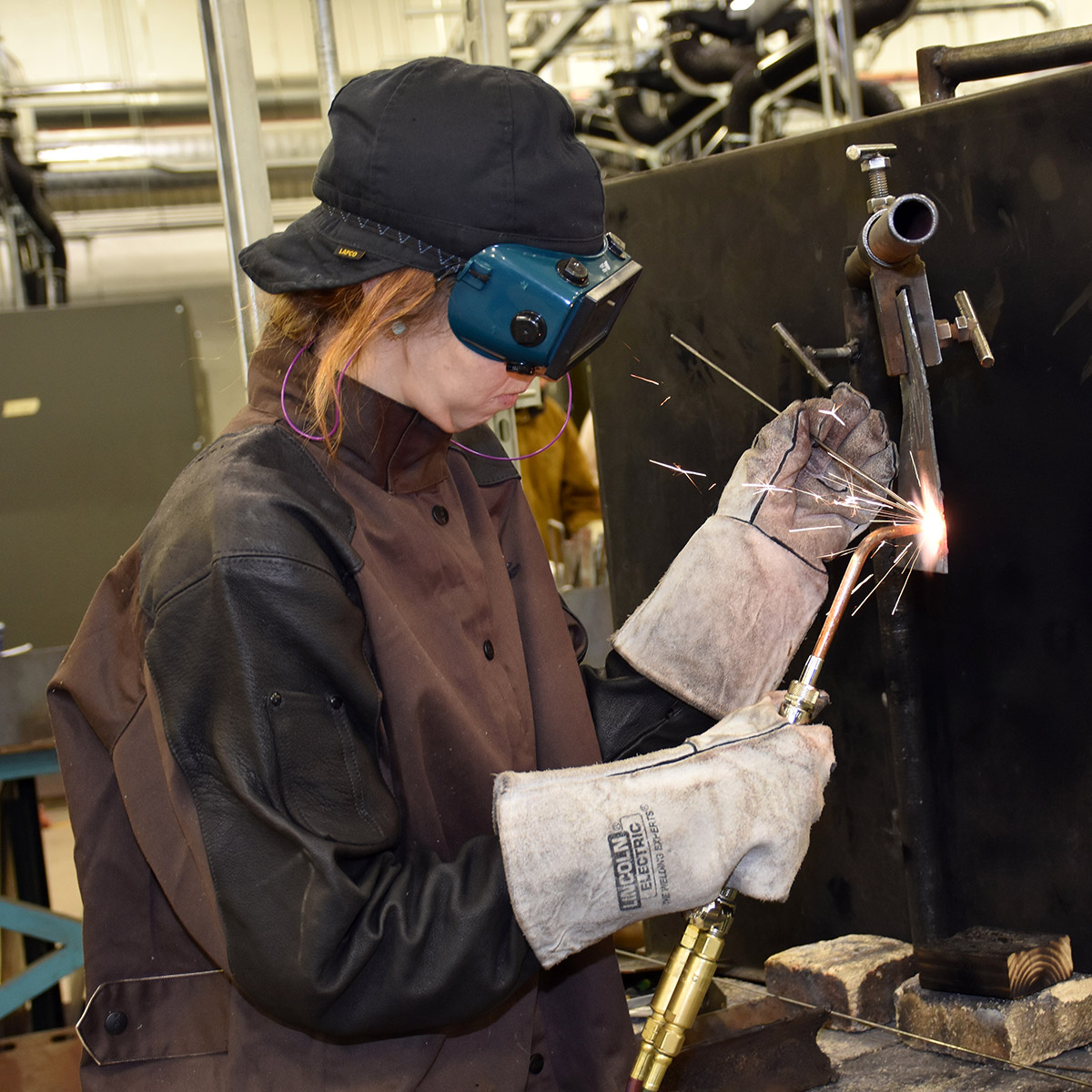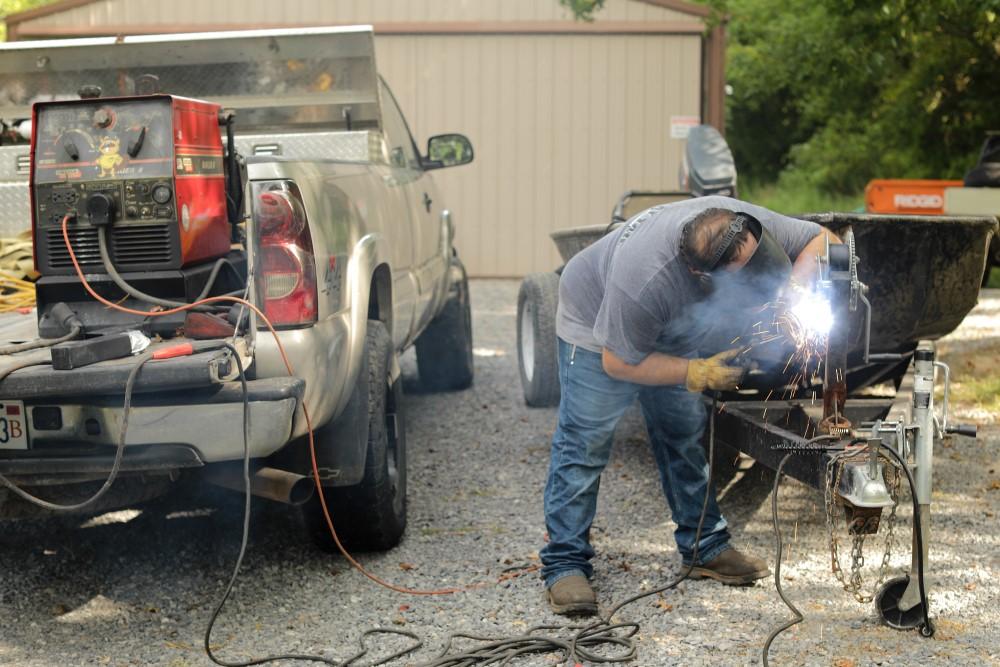How cracks form in welding and how Montana Mobile Welding and Repair prevents them
All Regarding Welding: Trick Insights Into Techniques and Best Practices for Success
Welding incorporates a variety of techniques, each suited for particular materials and applications. Comprehending these approaches, such as GMAW, SMAW, and TIG, is crucial for attaining excellent outcomes. The right tools and security methods can not be ignored. As prep work and fixing play essential functions in the welding procedure, grasping these aspects can substantially improve the top quality of the end product. What are the vital factors that ensure an effective weld?
Comprehending Different Welding Methods
Welding techniques include a variety of techniques, each matched to particular applications and materials. Amongst the most typical strategies are Gas Steel Arc Welding (GMAW), Protected Metal Arc Welding (SMAW), and Tungsten Inert Gas Welding (TIG) GMAW, likewise called MIG welding, is prominent for its rate and flexibility, making it suitable for thin products. SMAW, or stick welding, is preferred for its simplicity and performance in outside atmospheres, especially with thicker steels. TIG welding uses accuracy and control, making it suitable for complex job and non-ferrous metals (Belgrade Fabrication). Each strategy has its distinct advantages and considerations, permitting welders to select the most effective technique based on the job's demands, material kind, and preferred end results. Comprehending these methods is necessary for effective welding
Necessary Welding Equipment and Tools
While numerous welding techniques require certain skills, the best devices and devices are similarly vital for attaining top quality results. Necessary welding equipment includes welding devices, which vary depending upon the method-- such as MIG, TIG, or stick welding. Safety gear, consisting of handwear covers, aprons, and safety helmets, assurances safety and comfort during the procedure. Furthermore, components and clamps help secure materials in place, making sure accuracy in welds. Consumables like welding rods, cable, and protecting gas are likewise essential parts that affect the quality of the weld. Tools such as grinders and cutters help with surface preparation and post-weld completing, adding to an expert result. Buying top notch equipment ultimately boosts the performance and efficiency of welding projects.
Safety Practices in Welding
Correct safety practices are essential in the welding sector to safeguard employees from possible dangers. Welders need to put on proper personal protective equipment (PPE), including headgears with proper shading, gloves, and flame-resistant clothing. Ample air flow is important to lower exposure to hazardous fumes and gases created during the welding process. In addition, employees ought to be educated in the proper handling of welding devices to avoid mishaps. Fire safety procedures, such as maintaining combustible materials far from the welding area and having fire extinguishers easily offered, are needed. Normal inspections of devices and work areas can aid determine potential dangers prior to they result in crashes. By adhering to these security techniques, welders can produce a safer working atmosphere and reduce dangers related to their profession.
Preparing Materials for Welding
Preparing materials for welding is an essential step that significantly influences the quality and integrity of the last item (Montana Mobile Welding and Repair Fabrication). Proper prep work involves cleansing the surfaces to remove contaminants such as oil, rust, and dirt, which can endanger the weld. Methods such as grinding, sanding, or utilizing solvents are typically utilized to achieve a clean surface. In addition, ensuring that the materials fit together well is essential; voids can lead to weak welds. It's also vital to take into consideration the placement and positioning of the parts, as this will certainly impact the convenience of welding and the last end result. Ultimately, picking the suitable filler material and ensuring compatibility with the base metals is vital for attaining strong, durable welds
Tips for Getting High-Quality Welds
Accomplishing premium welds requires focus to detail and adherence to finest techniques throughout the welding procedure. Correct joint prep work is crucial, making certain surface areas are totally free and clean from contaminants. Choosing the proper filler product and welding technique based upon the base metals is critical for ideal bonding. Maintaining regular traveling speed and angle while welding can avoid defects and promote harmony. In addition, managing warm input is important; excessive heat can result in warping and weakened joints. On a regular basis evaluating the welds during the procedure permits for prompt modifications if required. Ultimately, utilizing suitable post-weld therapies, such as cleaning and stress and anxiety alleviation, can boost the longevity and stability of the weld, inevitably making sure a successful outcome.
Repairing Usual Welding Issues
Welding often offers difficulties that can impact the quality and integrity of the end product. Typical issues such as porosity, inconsistent weld beads, and getting too hot can develop, each requiring details repairing techniques. Comprehending these troubles is necessary for welders to enhance their abilities and attain excellent results.
Porosity Problems Discussed
Porosity can typically be ignored, it remains a critical concern in welding that can endanger the integrity of a completed item. Porosity refers to the existence of small gas pockets within the weld grain, which can additional reading lead and weaken the joint to premature failing. This issue generally arises from contaminants, wetness, or incorrect shielding gas protection during the welding process. To reduce porosity, welders ought to verify that the base products are completely dry and clean, utilize ideal securing gases, and maintain consistent welding parameters. Frequently examining the devices and environment can likewise help recognize prospective concerns prior to they manifest in the weld. Attending to porosity properly is important for attaining solid, durable welds that meet top quality criteria.

Inconsistent Weld Beans
Irregular weld grains can substantially affect the quality and strength of a finished item. Different factors add to this issue, including improper travel speed, wrong amperage settings, and inconsistent electrode angles. When the welder relocates also quickly, a bead may appear narrow and do not have infiltration, while moving as well gradually can trigger too much build-up. Additionally, making use of the incorrect amperage can lead to either undercutting or too much spatter, both of which compromise weld integrity. The welder's method, such as irregular torch movement, can also cause uneven grain appearance. To alleviate these problems, welders need to focus on preserving constant, controlled activities and guaranteeing proper devices setups to attain uniformity in their welds. Consistency is key to accomplishing dependable and strong welds.
Overheating and Warping Issues
Extreme heat during the welding procedure can cause substantial getting too hot and contorting issues, influencing the architectural integrity of the work surface. These problems commonly show up as distortion, which can endanger positioning and fit-up, making further setting up testing. Aspects adding to overheating consist of the option of welding specifications, such as voltage and take a trip speed, along with the kind of product being bonded. To reduce these concerns, welders ought to in 1 welder preserve consistent travel speed and suitable warm input while checking the workpiece temperature level. Furthermore, pre-heating or post-weld warmth treatment can aid alleviate tensions triggered by rapid air conditioning - Montana Mobile Welding and Repair Belgrade Welding. Routine assessment and adherence to ideal methods are vital in preventing overheating and making certain the durability and reliability of bonded frameworks
Frequently Asked Questions
What Are the Job Opportunities in the Welding Industry?
The welding market uses diverse job opportunities, including positions as welders, engineers, instructors, and inspectors. Specialists can work in manufacturing, building and construction, aerospace, and automotive fields, benefiting from strong demand and competitive incomes in different duties.
Exactly How Can I Enhance My Welding Speed Without Sacrificing Quality?
To enhance welding speed without compromising high quality, one need to exercise reliable strategies, maintain equipment, optimize setups, and enhance hand-eye coordination. Normal training and seeking feedback can also substantially add to accomplishing faster, high-quality welds.
What Accreditations Are Offered for Welders?
Countless accreditations exist for welders, including those from the American Welding Culture (AWS), the National Facility for Building And Construction Education and Research Study (NCCER), and numerous industry-specific organizations. These credentials improve employability and show skill efficiency.
How Does Welding Impact the Properties of Metals?
Welding affects the buildings of metals by altering their microstructure, which can bring about changes in stamina, hardness, and ductility. Warmth input and click to read more air conditioning prices during the procedure greatly impact these material qualities.
Can I Weld Dissimilar Metals Together?
